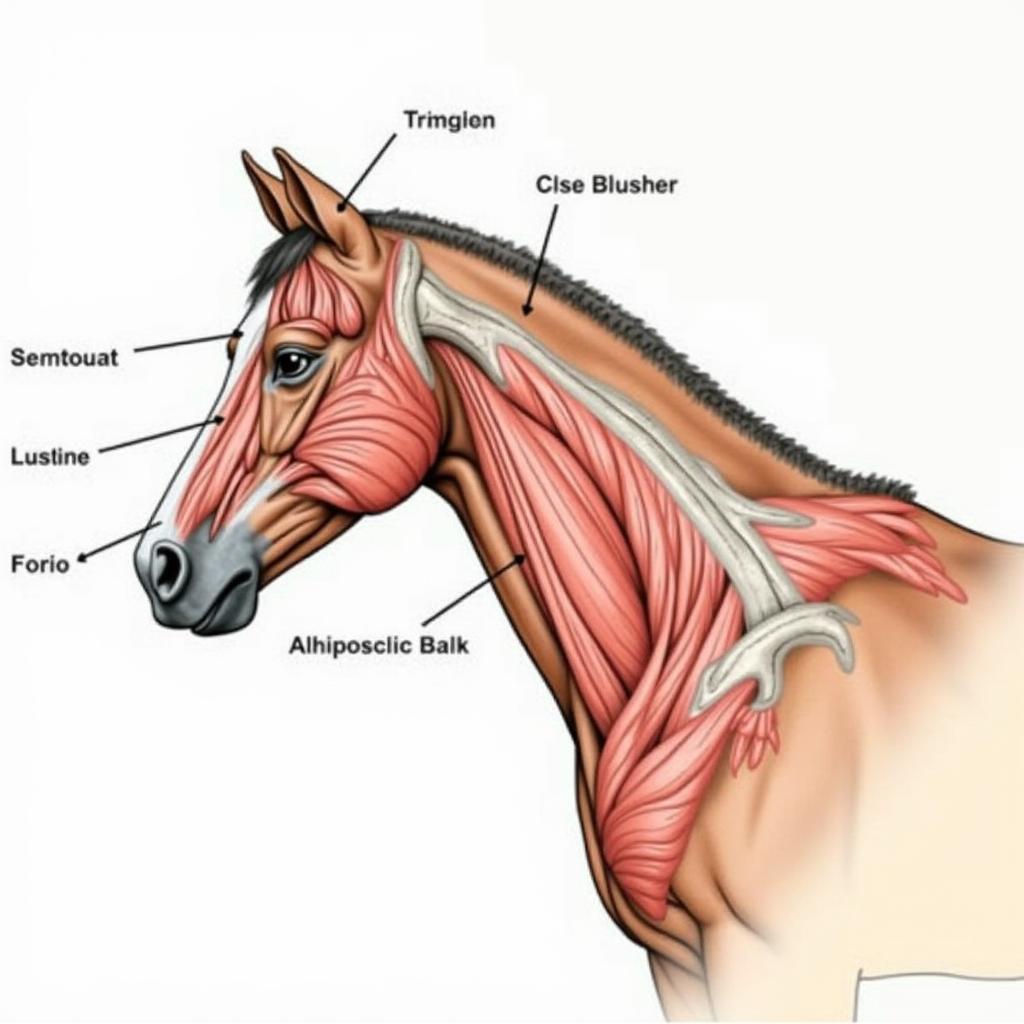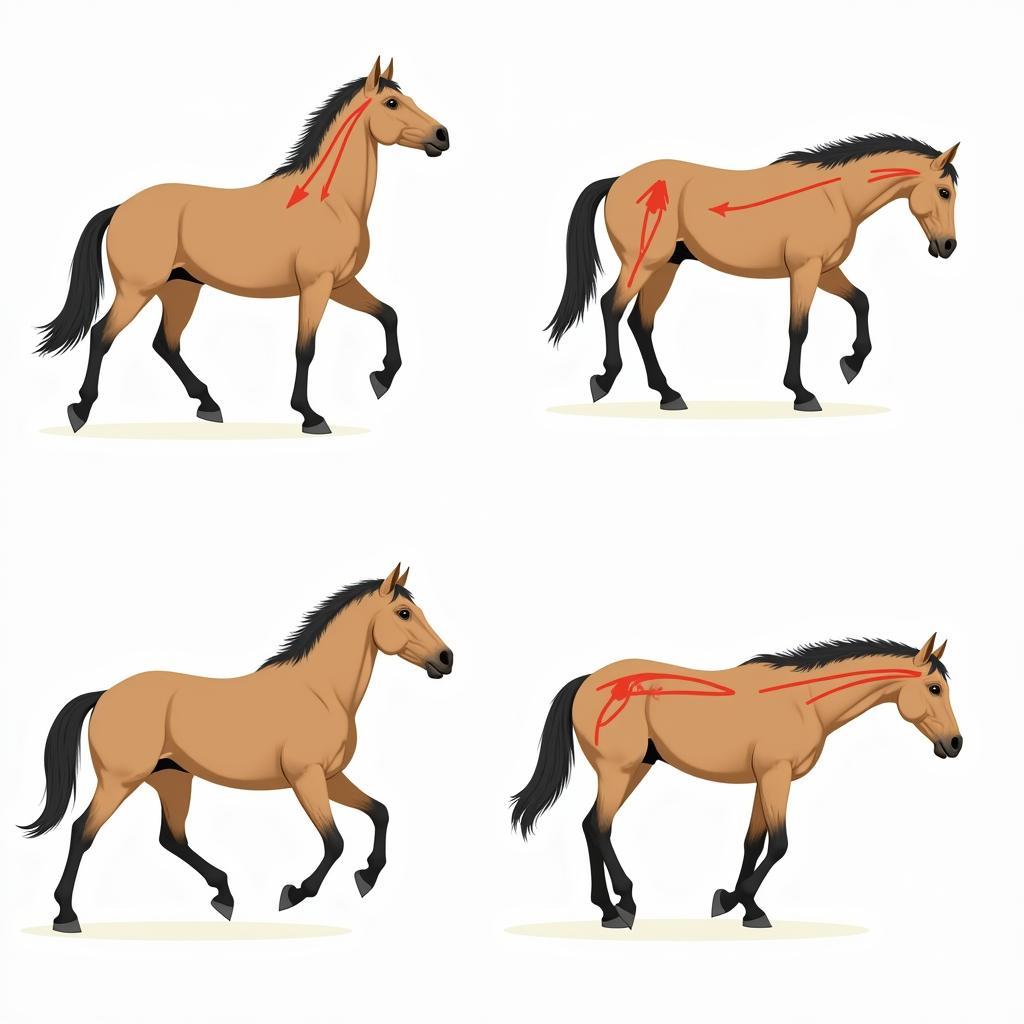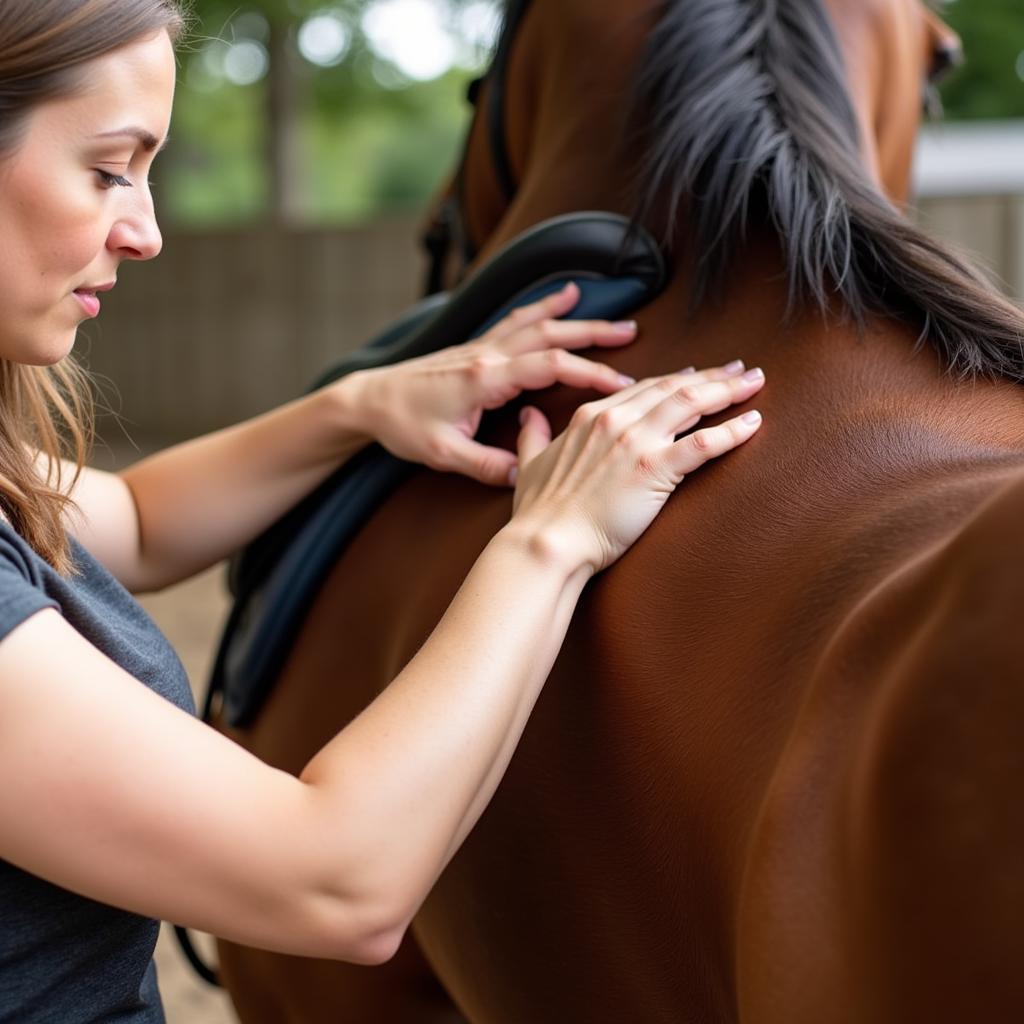The trapezius muscle in horses plays a crucial role in supporting the weight of the head and neck, as well as facilitating a range of movements. Understanding the anatomy and function of this muscle can help horse owners and enthusiasts ensure their equine partners stay sound and perform at their best.
 Horse Trapezius Muscle Anatomy
Horse Trapezius Muscle Anatomy
Understanding the Trapezius Muscle in Horses
The trapezius muscle is a large, superficial muscle located in the horse’s shoulder and neck region. It’s divided into two main parts:
- Cervical part: This section originates from the ligamentum nuchae, a strong, elastic band running along the horse’s neck, and inserts on the spine of the scapula (shoulder blade).
- Thoracic part: This section originates from the supraspinous ligament in the thoracic region and also inserts on the spine of the scapula.
Functions of the Trapezius Muscle
The trapezius muscle has several important functions:
- Supports the weight of the head and neck: This is particularly important when the horse is moving or carrying a rider.
- Moves the scapula forward and backward: This action is crucial for stride length and overall locomotion.
- Raises the scapula: This assists in lifting the forelimb, especially during jumping or climbing.
- Lateral flexion (bending) of the neck: The trapezius muscle, particularly the cervical portion, helps the horse bend its neck sideways.
 Horse Trapezius Muscle Function
Horse Trapezius Muscle Function
Common Issues Affecting the Trapezius Muscle in Horses
Like any muscle, the trapezius is susceptible to injury and strain. Here are some common issues:
- Muscle atrophy: This refers to the wasting or shrinking of the muscle, often due to lack of use, nerve damage, or underlying medical conditions.
- Muscle strain or tear: Overexertion, improper training techniques, or sudden movements can lead to strains or tears in the trapezius muscle.
- Muscle spasms: These are involuntary contractions of the muscle that can be painful and restrict movement.
- Trigger points: These are hypersensitive nodules within the muscle that can cause pain and stiffness.
Maintaining a Healthy Trapezius Muscle
Keeping your horse’s trapezius muscle healthy is vital for their overall well-being and performance. Here are some tips:
- Proper warm-up and cool-down: Always ensure your horse has adequate time to warm up their muscles before strenuous activity and to cool down afterward.
- Gradual training: Avoid pushing your horse too hard too soon. Gradually increase the intensity and duration of workouts.
- Correct riding techniques: Maintaining a balanced seat and using proper riding aids can help prevent unnecessary strain on the horse’s trapezius muscle.
- Regular stretching: Incorporating stretches that target the neck, shoulders, and back can help improve flexibility and range of motion.
- Massage therapy: Regular massage therapy from a qualified equine practitioner can help identify and address muscle tension and soreness.
 Equine Massage Therapy for Trapezius Muscle
Equine Massage Therapy for Trapezius Muscle
Conclusion
The trapezius muscle is an essential component of a horse’s musculoskeletal system, contributing significantly to their ability to move freely and carry weight. Understanding its anatomy, function, and potential issues can empower horse owners to provide the best possible care for their equine companions. By prioritizing proper training, conditioning, and preventative care, you can help your horse maintain a healthy and strong trapezius muscle for years to come.
FAQs
What are the signs of trapezius muscle problems in horses?
Signs can include stiffness, reluctance to move the head or neck, head tilting, muscle atrophy, pain upon palpation, and changes in gait or performance.
How are trapezius muscle injuries diagnosed in horses?
Diagnosis usually involves a physical exam by a veterinarian, assessing the horse’s range of motion, and potentially using diagnostic imaging techniques like ultrasound.
Can trapezius muscle problems in horses be treated?
Treatment depends on the severity and underlying cause. It may include rest, anti-inflammatory medications, physical therapy, massage therapy, or in some cases, surgery.
How can I prevent trapezius muscle problems in my horse?
Prevention focuses on proper conditioning, gradual training programs, correct riding techniques, regular stretching, and routine veterinary checkups.
What other muscles are closely related to the trapezius muscle in horses?
The trapezius muscle works in conjunction with other muscles in the neck, shoulder, and back, including the brachiocephalicus, rhomboideus, and latissimus dorsi muscles, to enable coordinated movement.
Need Help? Contact Justus Horses USA!
Have more questions or need expert advice on caring for your horse’s muscular health? Contact Justus Horses USA at Phone Number: 0772127271, Email: [email protected] Or visit us at QGM2+WX2, Vị Trung, Vị Thuỷ, Hậu Giang, Việt Nam. Our dedicated team is available 24/7 to assist you.